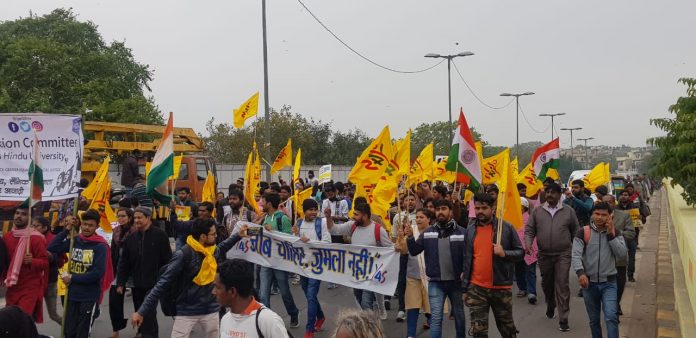By Inder Bisht for TwoCircles.net
Discontent over unemployment spilt over on to the streets of Delhi on February 12 when thousands of students, teachers and activists from different parts of the country came together for a protest march against the policies of ruling Bhartiya Janta Party (BJP) government in the national capital.
Along with the job crisis, the protesters also raised their voices on the issues of underfunding of public education, full implementation of reservation for backward groups, and the increased saffronisation of education.
Vijay Kumar, a student of Panjab University who travelled from Chandigarh for the event said: ”The space for free-thinking is shrinking in the university campuses as people hand-picked by the BJP have been appointed vice-chancellors in various universities all over the country and they don’t always appreciate critical and rational thinking.
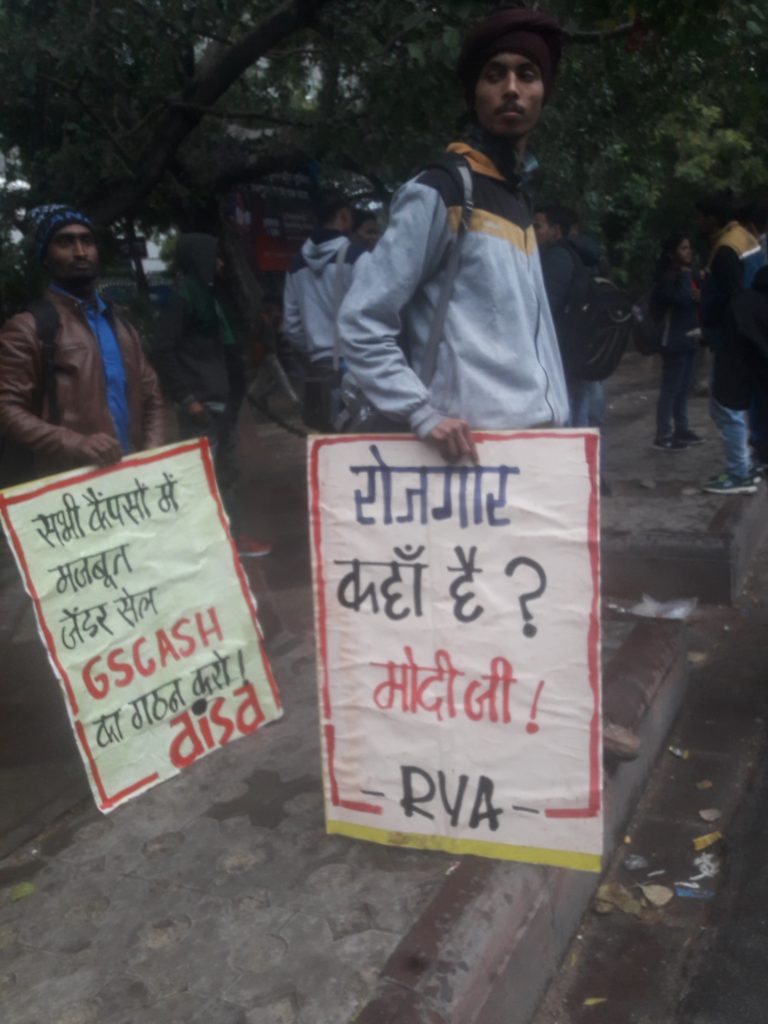
“In terms of women protection, the Gender Sensitization Committee against Sexual Harassment (GSCASH), which is an elected body, has been replaced by a nominated body by the administration called The Internal Complaints Committee (ICC) which has been found to be quiet lenient towards the perpetrators, especially when they are from the administration,” he added.
Narrating his personal account, Faizan, a student of Maulana Azad National Urdu University, Hyderabad, said, “In the last few years, the scholarship for meritorious students has been slashed from Rs 30,000 to Rs 11,000 in the Masters of Computer Application course while the number of seats available for PhD has come down from seven to eight per year to one or two”.
Faizan also claimed that due to the reduction in the education budget, funds for programmes like campus placement events have been stopped or reduced by the university administrations around the country.
Students also raised the issue of 13-point roster system at the march which they said was an attempt to dilute the representation of SC/ST communities on the campuses.
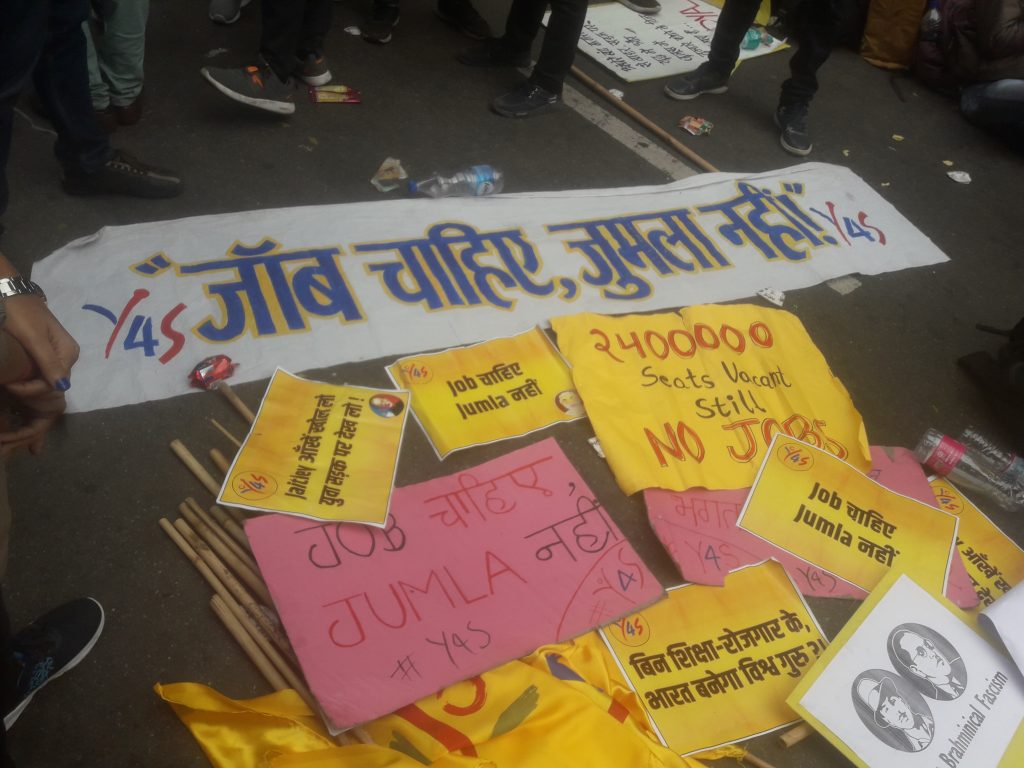
The protest in Delhi happened amid the swirling controversy around the alleged withholding of the National Sample Survey Office (NSSO) report, which had purportedly stated that unemployment in the country had reached 6.1 percent – highest in 45 years, by the government.
Although the government has dismissed the alleged leaked NSSO survey — which first appeared in a news report of a national daily—as “unverified”, two members, including the chairman, of the National Statistical Commission (NSC), the organisation which publishes the NSSO report, has resigned from their posts citing non-publishing of the survey after it had been approved by the NSC as the reason.
The controversy came on the heels of another survey conducted by a private organization Centre for Monitoring Indian Economy (CMIE) which had reported a loss of 11 million jobs in India in 2018.
Commenting on the issue, Mahesh Vyas, managing director & CEO of CMIE said: “Steady fall in the investment rate since 2011-12, demonetization shock in November 2016, and the GST shock in July 2017 are the main reasons behind the job losses we see in 2018”.
Vyas further stated that the government needs to intervene immediately and spur investment in order to pull the economy out of the spell of low employment generation in the country.
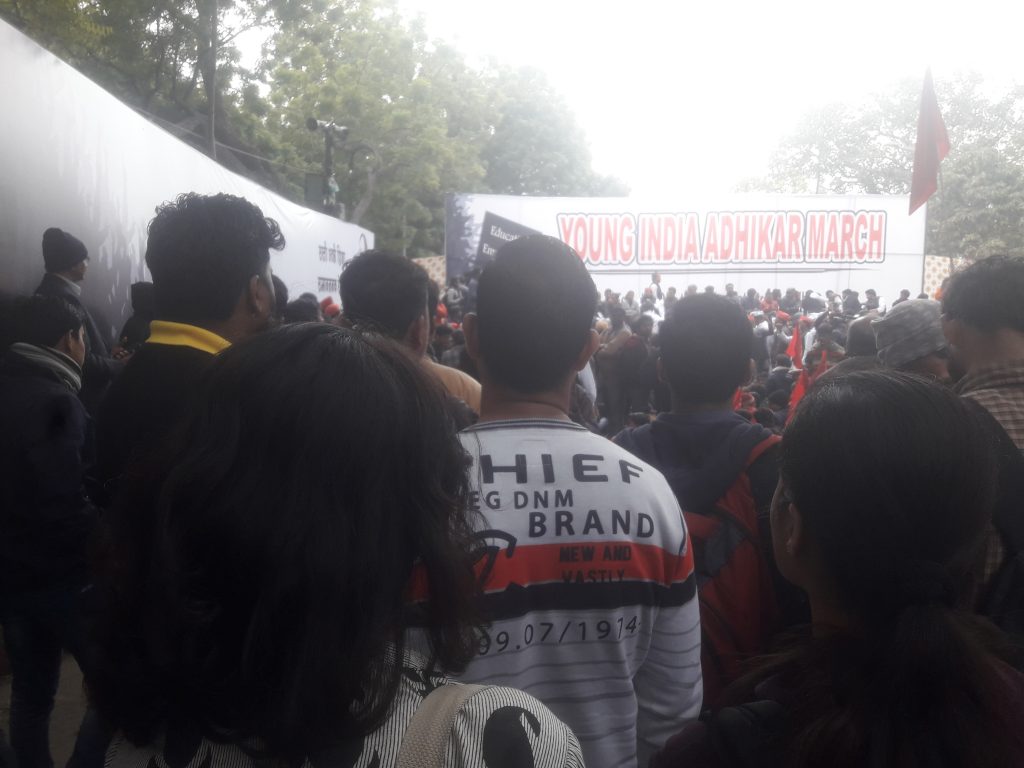
The ruling Bharatiya Janata Party (BJP) recently lost three major states in the Assembly elections in December last year where analysts termed the widespread farm-distress prevailing in many parts of rural India as the major factor behind the poll outcome.
Although unemployment is not believed to have had a significant impact in deciding the outcome of an election until now, the emergence of new data about the shape of the economy, particularly with regard to the employment level in the country in reports like CMIE, could swiftly change the mood of the nation, especially among the youths against the party.
Present at the students’ protest march, Yogendra Yadav, president of Swaraj India said: “Although I have been involved mostly with the farmers’ issue, I think that, unemployment in the country at present is a much bigger issue than the farmers’ distress. The only thing is that it has been invisibilised.”
“Protest marches and gatherings like these will reveal the truth of the economic performance of the government and will make the voters, especially the youth, aware about it. Our aim is to localize protests like these in different parts of the country,” Yadav added.
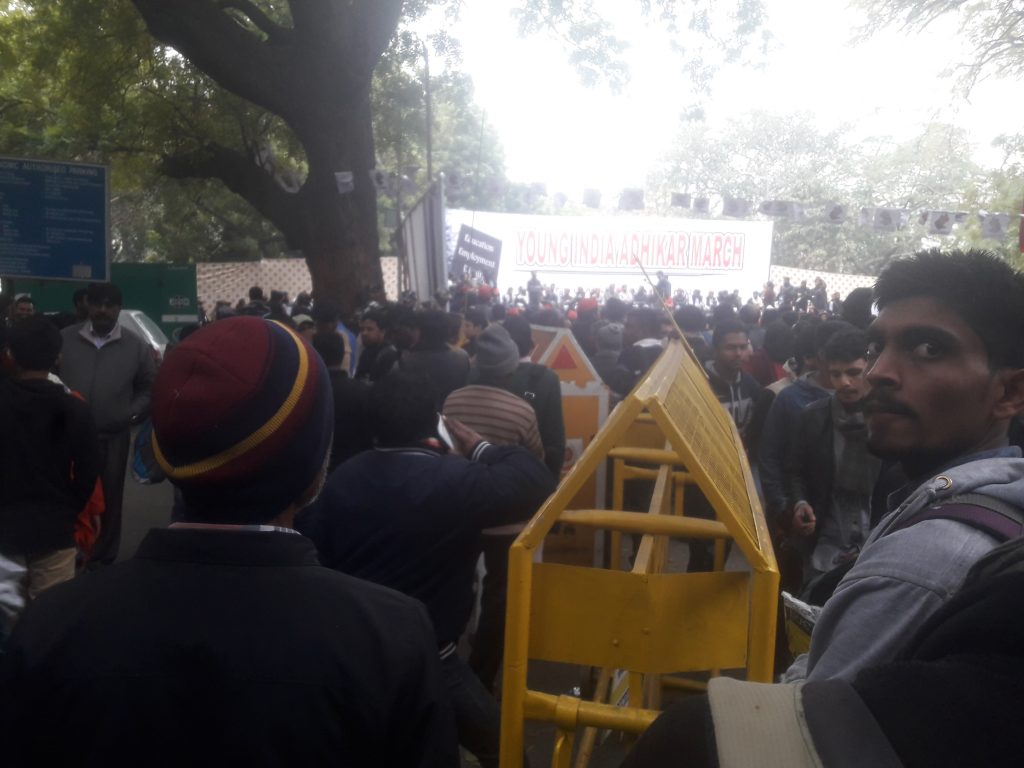
Yadav blamed the misplaced priorities of the government behind the current situation.
“It’s clear that investment is their (government’s) priority, employment is not; production is their priority, the producer is not; aspirational youth is their priority, struggling youth is not. So there was no strategy to tackle this issue in the first place,” Yadav said.
Employment generation was one of the highlights of the BJP manifesto in the 2014 general elections where it had termed the then ruling UPA’s ten-year rule as “jobless growth”.
Then BJP’s prime ministerial candidate, Narendra Modi, had even promised “one crore jobs per year” at an election rally in Agra in November 2013 in the run-up to the general elections 2014.
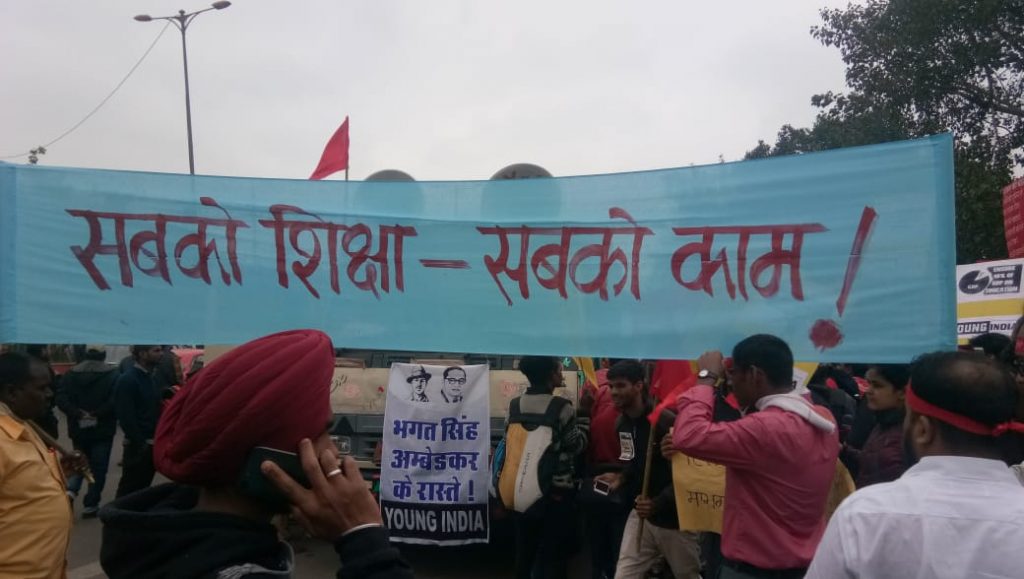
In its election manifesto, the saffron party had promised to “accord high priority to job creation” and strategically develop high impact domains like labour-intensive manufacturing, tourism and strengthen the traditional employment bases of agriculture and allied industries.
In light of the CMIE data, all these promises look hollow now as the current scenario paints a different picture.
In the absence of formal employment opportunities in the country, informal jobs like road-side vending are being passed on around as a substitute to the former by the BJP.
Within the larger debate of unemployment, stagnation in vacancies in government jobs is another issue which has affected lakhs of educated youths who have been preparing for the entrance examinations for government jobs for years.
Representatives of sixty youth organisations last month had gathered at Delhi’s Constitution Club and demanded that the situation of unemployment be declared a “national disaster”.
The delegates, who were mainly representing disgruntled job aspirants who felt cheated after a spate of “paper-leaks” in government examinations were discovered, asked the government to fill up vacancies in government jobs across the country on a priority basis and ensure that a fair and corruption-free selection process is held in government examinations.
The representatives at the end of the gathering declared that if their demands were not accepted by the government in a month, a nationwide protest would be launched starting from the national capital on 27 February.
Speaking to TwoCircles.net, Govind, who is an engineer by education, said: “Government in parliament recently admitted that around 24 lakh posts are vacant in central and state governments presently in the country. The government has been unable to create new jobs in the country but, at least, the ones which have been sanctioned should get filled.”
Some of the representatives expressed fear that the central government might scrap four lakh job vacancies in various departments shortly.
India has witnessed steady GDP growth in the 21st century; however, employment growth has not matched pace with the growth of overall economy prompting the critics to call it a “jobless growth”.
India’s unemployment rate has been gradually rising in the last year, with unemployment rising to its highest level in 27 months at 7.38% as of December 2018, according to the CMIE data.
The report titled “Unemployment Rate in India” has shown that about 396.9 million working-age Indians were employed as of December 2018, compared to 407.8 million in December 2017.


